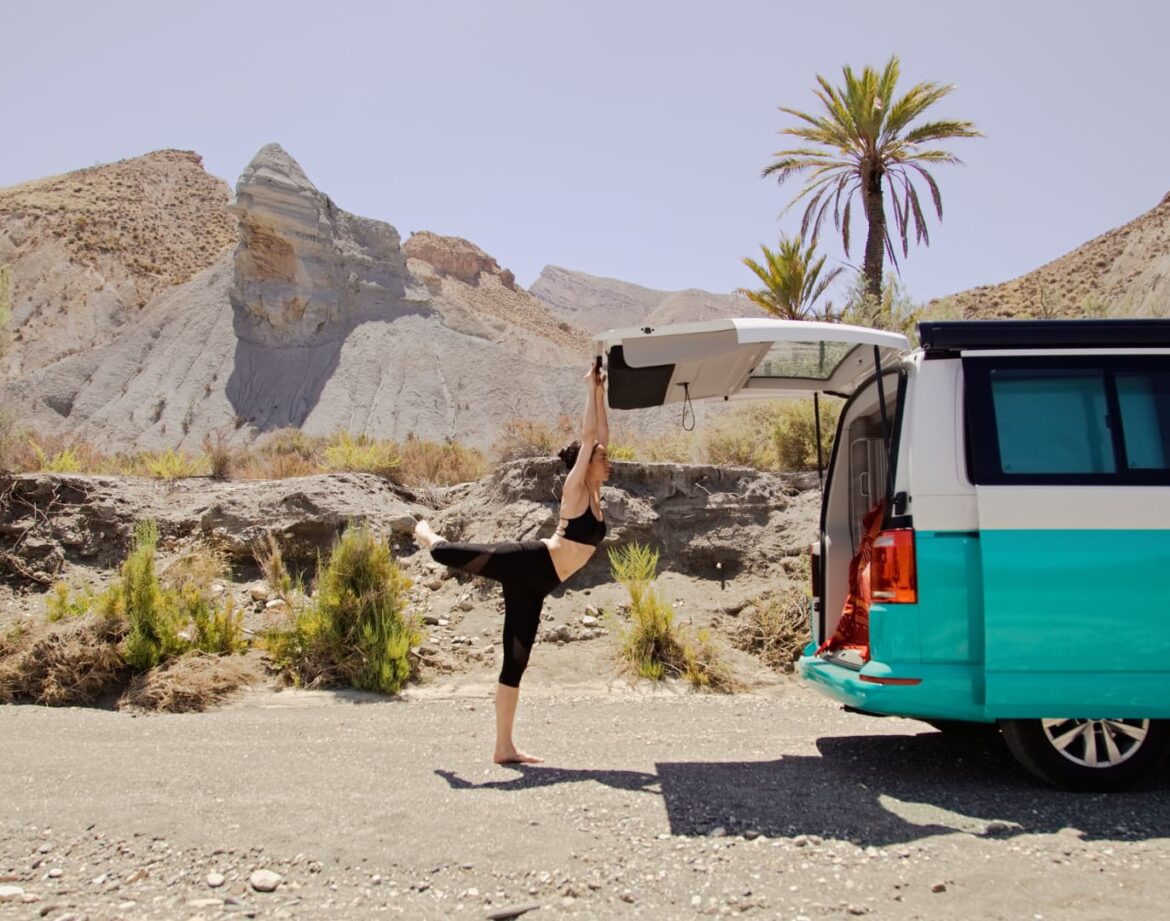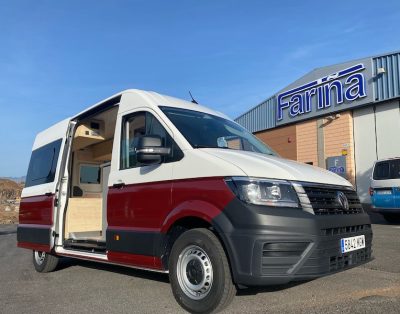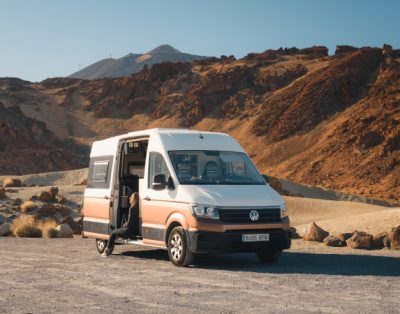Can You Drive a Campervan on a Normal Licence in Spain? A Complete Guide
Introduction
Listen.
Before you start picturing yourself cruising along Spain’s sun-drenched coastline, stopping at picturesque villages, and waking up to the sound of waves, there’s something you need to know.
Not all campervans are created equal.
And neither are the licences required to drive them.
That’s right. Depending on the weight of your campervan, you might be good to go with a standard Category B licence—the same one you use for your everyday car—or you might find yourself in need of something more.
So, can you drive a campervan on a normal licence in Spain?
The quick answer: Yes, but only if it weighs 3,500 kg or less.
Anything above that? You’ll need a Category C or C1 licence. And that’s where things get complicated.
Keep reading, because this is where most travellers get caught out.
What Licence Do You Need to Drive a Campervan in Spain?
Motorhomes Under 3,500 kg: Driving with a Category B Licence
Here’s the good news.
If your campervan weighs 3,500 kg or less, you can drive it with a Category B licence—the same licence that lets you drive a regular car. No extra tests. No special permissions. Just you, the open road, and the freedom to explore.
And the best part?
Most campervans for hire in Spain fall under this category. That means whether you’re renting a van from AJJ Vans in Tenerife or picking one up in Barcelona, you can hit the road straight away.
But—and this is a big but—weight matters.
If your campervan is close to the 3,500 kg limit, even minor additions like extra water, luggage, or a roof rack can push it over. And that’s where things start getting tricky.
Want a quick breakdown? Take a look at this table:
| Weight (kg) | Licence Required |
|---|---|
| Up to 3,500 kg | Category B (Standard licence) |
| Over 3,500 kg | Category C1 or C |
So, if you’re renting a campervan, always check the vehicle’s weight before signing anything.
It could save you a massive fine—or worse, your trip.
Motorhomes Over 3,500 kg: Requirements for Category C Licences
Now, what happens if your campervan exceeds 3,500 kg?
That’s where things get a little more complicated.
For heavier motorhomes, you’ll need a Category C or C1 licence.
- C1 Licence → Covers vehicles between 3,500 kg and 7,500 kg.
- C Licence → Required for anything above 7,500 kg (which is rare for campervans but not impossible).
And here’s the catch:
If you passed your driving test before January 1997, you might already have the C1 entitlement on your licence without even knowing it.
Sounds great, right? Not so fast.
To legally use it in Spain, you’ll need to:
- Pass a medical exam (yes, even if you’re fit as a fiddle).
- Renew your licence more frequently than a standard Category B holder.
Miss either of those? Say goodbye to that entitlement.
So before you commit to a bigger motorhome, double-check your licence, your entitlements, and your renewal requirements.
Or just play it safe and stick to 3,500 kg or less.
Weight Categories and Licence Types Explained
Weight isn’t just a number—it’s the difference between an easy, stress-free road trip and a bureaucratic nightmare.
Let’s break it down.
Why Weight Matters
Here’s the thing:
Spanish road laws are strict when it comes to vehicle weight.
- It affects your speed limits (heavier vehicles = lower speed limits).
- It changes where you can park (some towns restrict parking for larger motorhomes).
- It determines which roads you can use (some smaller rural roads have weight restrictions).
So, whether you’re buying, renting, or just planning, knowing these categories is crucial.
Common Weight Limits and Classifications
| Vehicle Type | Weight (kg) | Licence Required |
|---|---|---|
| Small campervans | 2,000 – 3,500 | Category B (Standard licence) |
| Standard motorhomes | 3,500 | Category B (with weight close to limit) |
| Large motorhomes | 3,500 – 7,500 | Category C1 |
| Heavy-duty motorhomes | 7,500+ | Category C |
See the problem?
Most travellers assume “it’s just a big van”, but once you start adding water tanks, gas installations, extra batteries, and storage, things can add up fast.
Campervans vs. Motorhomes vs. Caravans
Not all “homes on wheels” are the same.
- Campervans – Compact, easy to drive, often under 3,500 kg. No problem with a Category B licence.
- Motorhomes – Bigger, heavier, often close to 3,500 kg. Some require Category C1.
- Caravans – Not motorised, but towing weight matters. If the total weight exceeds 3,500 kg, you might need a B+E licence.
So before you hit the road, make sure you know exactly what you’re driving—because the wrong licence can cost you your trip.
Essential Traffic Rules for Campervans
Let’s get something straight.
Driving a campervan isn’t the same as driving a regular car.
Yes, they share the same licence requirements (if the vehicle is under 3,500 kg), but the rules on the road? They change.
And if you think the police won’t bother checking, think again.
Speed Limits for Campervans
Speed limits in Spain vary depending on weight. And, as you already know, weight determines which licence you need—and now, how fast you’re allowed to go.
Let’s break it down:
| Vehicle Type | Motorway (km/h) | Main Roads (km/h) | Urban Areas (km/h) |
|---|---|---|---|
| Campervans (≤3,500 kg) | 120 | 90 | 50 |
| Motorhomes (>3,500 kg) | 90-100 | 80 | 50 |
So, if you’re in a standard AJJ Vans campervan (yes, all four of their campervans can be driven with a normal Category B licence), you can legally cruise at 120 km/h on the motorway—just like a regular car.
But here’s where things get interesting.
Speed cameras in Spain are ruthless.
Unlike in other countries where you get a bit of a “margin of error,” Spain’s traffic enforcement is precise. 1 km/h over the limit? Fine.
And those fines aren’t small, either.
So stick to the limits. Your wallet will thank you later.
Road Safety and Traffic Laws
Now, let’s talk about the rules you probably didn’t know existed.
- Overtaking laws – If you’re driving a campervan over 3,500 kg, overtaking on certain roads is restricted.
- Seatbelt rules – All passengers must wear seatbelts at all times, including those in the living area.
- Alcohol limits – Lower than for regular cars (0.25 mg/L in breath, 0.5 g/L in blood).
- Low-emission zones – Some Spanish cities restrict access to older diesel vehicles.
Now, here’s something that catches a lot of travellers off guard:
Battery charging and fuel stops.
Running out of fuel in a remote location might sound like an adventure, but trust me, it’s not.
Before setting off, check your nearest fuel stations and battery charging stations.
And if you’re heading into the mountains or rural Spain, fill up before you go. You might not see another petrol station for miles.
Camping and Parking Regulations in Spain
This is where things get tricky.
Parking is NOT camping.
And if you don’t know the difference, you could end up with a hefty fine.
Avoiding Fines: Camping and Parking Guidelines
First, let’s clear this up.
Parking – Allowed in public areas as long as you don’t extend anything outside the vehicle. No tables, chairs, awnings, or stabilisers.
Camping – The moment you start setting up an outdoor “living space” (chairs, awning, or even opening windows too wide), you’re camping. And that’s not allowed outside designated areas.
Now, the biggest mistake travellers make?
Thinking they can “park” overnight anywhere.
Here’s why that’s a bad idea:
| Location | Parking Allowed? | Camping Allowed? |
|---|---|---|
| Public car parks | Yes | No |
| Coastal areas (Coastal Act) | No | No |
| National parks & protected zones | No | No |
| Designated campervan areas | Yes | Yes |
FAQ: Common Questions About Driving a Campervan in Spain
Q1: What type of driving licence is required for campervans under 3,500 kg in Spain?
A standard Category B licence is sufficient.
All four campervans from AJJ Vans fall under this category—so no extra licences needed.
Q2: Are there any special rules for parking campervans in protected areas?
Yes.
The Coastal Act prohibits parking near beaches, dunes, and other protected zones. Fines can be up to €1,500.
Q3: What are the speed limits for motorhomes on Spanish roads?
- 120 km/h (under 3,500 kg)
- 90-100 km/h (over 3,500 kg)
Stick to these, and you’ll avoid expensive speeding fines.





